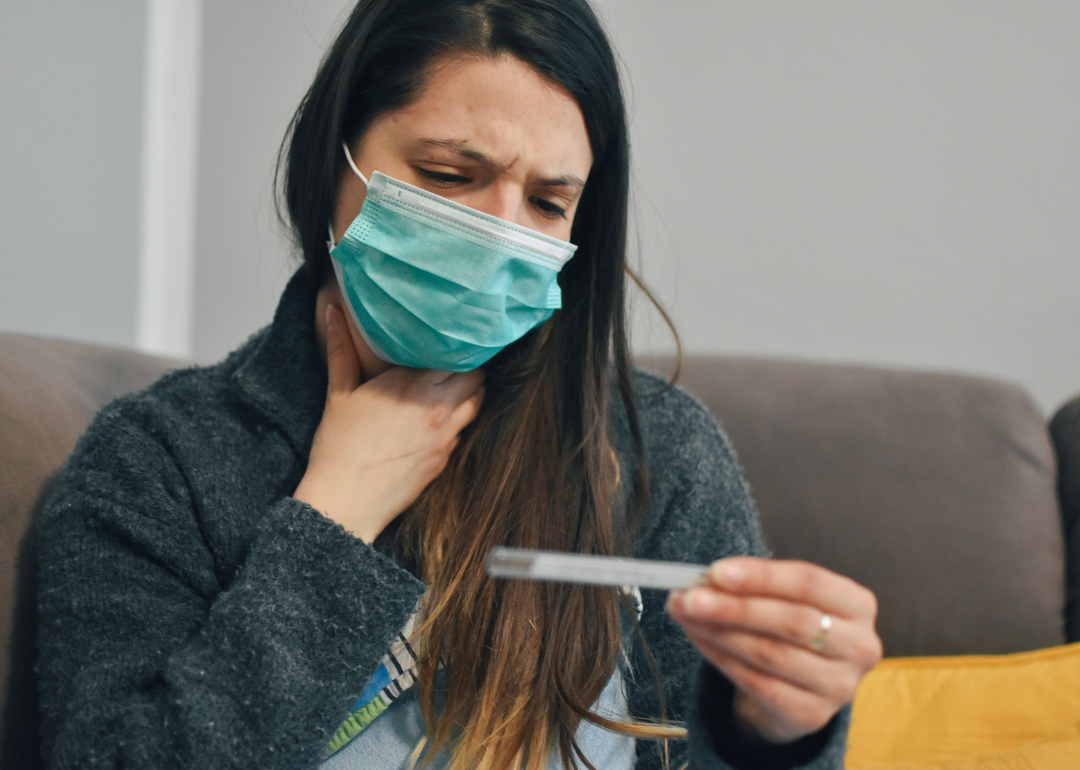Nearly 1 in 4 nurses said they’re likely to leave nursing due to COVID-19—here’s why

Canva
Nearly 1 in 4 nurses said they’re likely to leave nursing due to COVID-19—here’s why
A nurse organizing medical tools
Nurses have the opportunity to make a significant impact on their patients. While working to help heal and save lives may be rewarding, it can also take a physical, mental, and emotional toll. Though COVID-19 hospitalizations appear to have eased from their peak, the health care industry has taken a hit like never before.
With the extreme demands and working conditions in recent years, it’s no wonder nurses are reassessing whether they want to remain employed in the health care industry. Nearly 1 in 4 nurses said they are “somewhat” or “extremely likely” to leave nursing due to the pandemic, according to a 2021 AMN Healthcare survey; 34% of nurses are “very likely” to leave their job by the end of 2022, a 2021 Incredible Health study found.
Study.com compiled a list of six common reasons nurses say they are leaving their jobs during the COVID-19 pandemic, using data from the 2021 Survey of Registered Nurses published by AMN Healthcare. The survey received 14,737 responses and included 7,108 completed surveys from registered nurses located in the U.S. Percentages tabulated from the survey responses may not equal 100% due to rounding.
Despite median salary increases for registered nurses in recent years, the outlook for nurses remaining in the industry appears grim. The strain of the profession has led to extreme levels of stress and depression to the point that there has been increased suicides among health care workers since the onset of the pandemic. Pre-pandemic, the quit rate for those in health care and social assistance hovered around 2%, according to BLS data. The quit rate peaked in August 2021 at 3.1%, the highest for the sector in at least the past decade.
Read on to learn how the COVID-19 pandemic has caused nurses to leave their fields.
![]()

Canva
#5. Health concerns and work-related risks (tie)
A person holding their throat while looking at a positive Covid-19 test
– Among those likely to leave nursing: 51%
– Among those unlikely to leave: 14% (health concerns), 28% (work-related risks)
When AMN Healthcare completed its survey, findings showed that 18% of RNs received a COVID-19 diagnosis, which was 1.8 times higher compared to the the general population, according to the report. Such health risks likely drove up stress levels as nurses feared contracting the virus from their patients or coworkers, how their bodies would respond to it, and exposing it to their families. In the initial stages of the pandemic, vaccines hadn’t rolled out yet, and the death toll across the country due to the virus was high. Nurses were often exposed as they dealt directly with patients who needed COVID-19 treatment.

Photographee.eu // Shutterstock
#4. Burnout
A doctor waking up a nurse sleeping on their desk
– Among those likely to leave nursing: 59%
– Among those unlikely to leave: 17%
Heavier workloads, longer hours, understaffed hospitals, and dwindling room for work-life balance all contribute to the nationwide nurse shortage. While the pandemic may not have created burnout for nurses and other medical professionals, it certainly intensified the work environment for many health care employees. Eighty-one percent of nurses expressed feeling exhausted, 71% said they were overwhelmed, and 65% responded that they felt anxiety, according to a 2021 American Nurses Foundation survey.
Additionally, a March 2021 report in the Journal of Advanced Nursing found risk factors associated with burnout include increased workload, feelings of anxiousness concerning contracting COVID-19, and “working in a high-risk environment.”

Canva
#3. Emotionally drained
A nurse who is emotionally drained
– Among those likely to leave nursing: 61%
– Among those unlikely to leave: 20%
As front-line workers, nurses have been feeling the emotional and physical weight of the pandemic. It takes a lot to handle multiple patients while caring for their families and personal lives. At times, in the earlier stages of the pandemic, hospitals would double the number of beds in the intensive care unit but weren’t equipped with enough nursing staff to match the volume of patients. The number of patients, along with the nurse’s fear of contracting the virus, impacted the emotional health of many in the health care industry.

Canva
#2. Work-life balance
A school nurse examining a student/patient
– Among those likely to leave nursing: 62%
– Among those unlikely to leave: 28%
A healthy work-life balance is vital in all industries—not just nursing—as people can take time for themselves to relax, spend time with loved ones, and pursue personal hobbies or interests.
The Nurse Salary Research Report also showed that 83% of nurses expressed that salary was one of the reasons they chose to become a travel nurse specifically; 36% surveyed suggested flexible working hours were the reason. The travel nurse sector grew by 40% in 2021 as there was surging demand for nurses, especially at the height of the pandemic when there was a nationwide shortage of health care workers. When hospitals were overwhelmed with COVID-19 patients, hiring departments turned to travel nurses to get more hands on deck to ensure units were fully staffed.
Working as a school nurse can also provide a work-life balance, and nurses in this sector may find it advantageous to work only during school hours. School nurses are usually required to treat students with acute injuries or who may show signs of a fever. Qualifications for a school nurse may include being able to practice as a registered nurse.

Cryptographer // Shutterstock
#1. Stress levels at work
A stressed nurse wearing a mask and looking through a window
– Among those likely to leave nursing: 71%
– Among those unlikely to leave: 30%
Like many other professions, nurses have faced challenges even before the pandemic. But stress levels on the job for nurses were further exacerbated by the emergence of COVID-19. Medical professionals in 2020 found themselves at the forefront of an unprecedented global health crisis that would continue years later. The pandemic contributed to higher stress levels worldwide for medical professionals, leading to shortages in the U.S. workforce and burnout.
Since the pandemic, nurses have also incurred sleeping challenges. A study conducted from June through August 2020 published by the Journal of Occupational and Environmental Medicine found that at least 1 in 5 nurses had depressive symptoms; more than half reported feelings of anxiety and noted having insomnia.
The lack of access to personal protective equipment during the earlier stages of the pandemic, the stress of caring for patients, and the shift in workload at their jobs all took a toll on nurses’ mental health.
This story originally appeared on Study.com and was produced and
distributed in partnership with Stacker Studio.